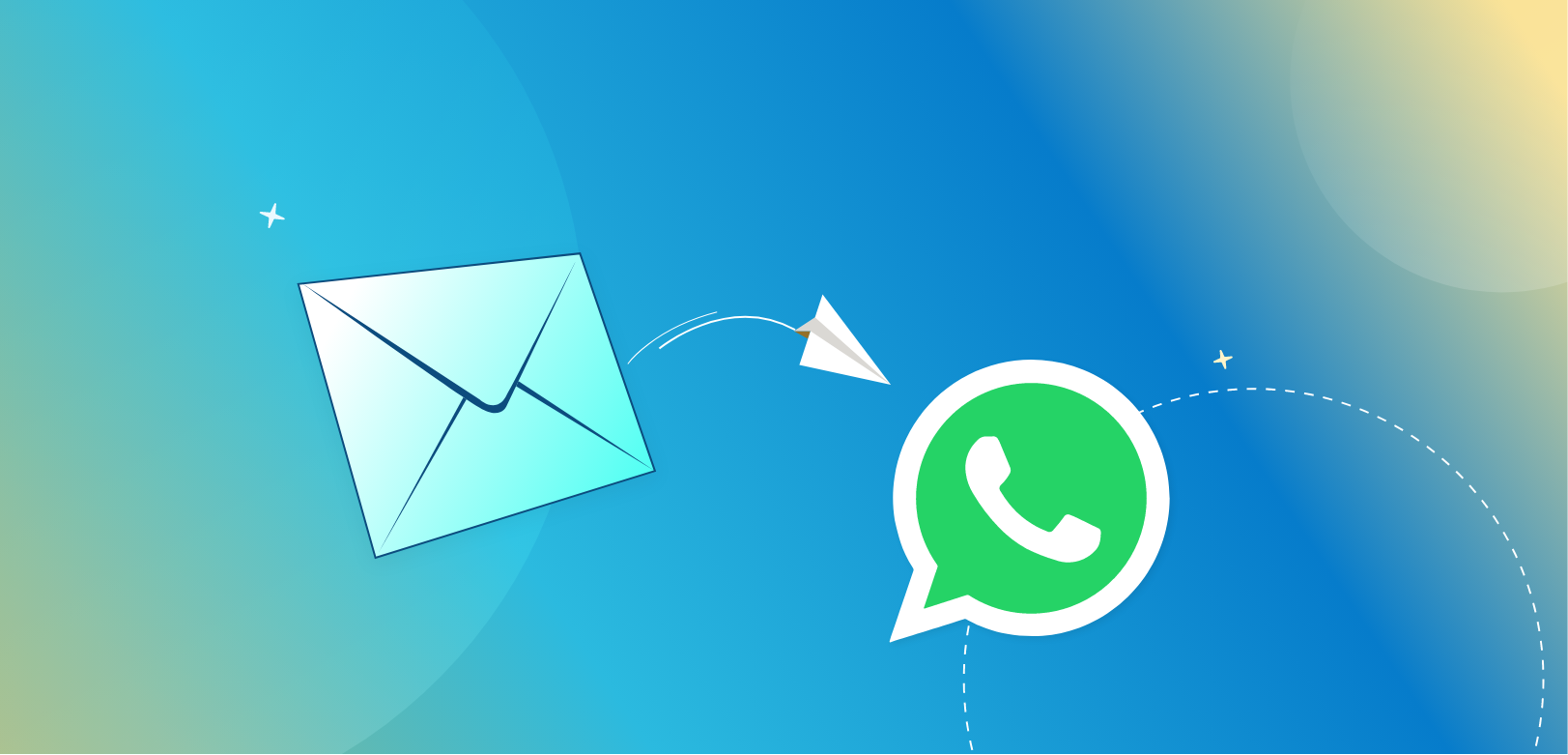Combat email overload: Move your subscribers from email to WhatsApp
This blog explores why email marketing effectiveness is declining and how WhatsApp offers a powerful solution.

Emails boast the highest ROI and a massive user base. Plus, people constantly check their inboxes. These facts paint a clear picture that email is not just a good idea; it is an absolute essential for every organisation.
While email's high ROI and massive user base initially made it the go-to marketing channel, the tide is turning. Constant email bombardment has become a major pain point for users, with "overcoming email overload" being a constant topic of discussion. This shift in user behaviour is reflected in platforms like Gmail, which introduced dedicated "Unsubscribe" buttons and a host of new requirements for bulk senders. It is clear: email alone is not enough anymore.
WhatsApp provides a wonderful solution to this situation: Against an email open rate of 21.33%, it offers a whopping 98% open rate and happens to be largely underutilised as a marketing channel.
A quick Google search will show you how marketers debate email vs. WhatsApp. However, the truth is, you can benefit far more from the synergy of the two than from weighing their individual benefits. In this blog, we will walk you through the why, how, and other specifics of moving your subscribers to WhatsApp.
Let’s get started.
Why is making email work so tough?
An average user’s inbox is bombarded by 120 emails on a daily basis, and despite checking their inboxes throughout the day, most of them do not seem to be able to cope with the sheer volume. This leaves them unable to manage their inboxes, and this ultimately reduces the efficacy of email marketing regardless of your efforts.
Gone are the days when receiving a cold email on your bulky computer was an exciting thing. Today, people hardly feel similar excitement even if their favourite brand emails them, and neither does the mobile-first world favour it.
Packing the punch in a 600-pixel email template is not easy either because of our social media usage patterns. The content height on most platforms redlines at 1400 pixels, and constant swiping in anticipation of something “new and captivating” leaves users wanting for more.
Competing in this attention economy as an email marketer only gets tougher for you. You are already burdened with managing email lists and automation-based workflows, implementing strategies, ensuring deliverability across devices, analysing engagement metrics, and whatnot. While emails remain relevant, the complexity for marketers and the volume of subscribers are imposing limitations on their effectiveness.
Why is WhatsApp the perfect solution?
Unlike emails, WhatsApp provides a direct, instant communication channel that is far more interactive and convenient. With higher open rates and easier response mechanisms, users are more likely to engage with WhatsApp messages. Additionally, with current AI technology, high-quality automated personalisation is no longer a challenge. This makes WhatsApp better positioned to run campaigns like offering exclusive discounts, early access to sales, and member-only sales. On top of that, businesses can deliver better customer support on WhatsApp due to the quick two-way communication that no other channel can match.
In fact, WhatsApp also makes it easier to capture the voice of the customer with its interactive features like polls. If you are not already using it, you would be surprised to know that marketers are hosting full-fledged webinars and Q&A sessions via WhatsApp Business API. Combining this with the ability to share multimedia like images, voice notes, and videos on top of full-fledged catalogs makes it a very powerful marketing solution.
To put it in perspective, almost 50% of the 98 million WhatsApp users in the US chat on a daily basis. As long as you do it right, no other channel can offer the same level of engagement that WhatsApp does. Its end-to-end encryption and strict anti-spam measures ensure user privacy and prevent abuse, reducing the burden on your end.
Enhancing WhatsApp capabilities with WhatsApp CRM
As you might have figured out, you will need more than WhatsApp Business API to use WhatsApp effectively. Integrating with a WhatsApp CRM like Pepper Cloud can not only make it easy to manage one-on-one conversations but can also open doors to additional benefits.
For instance, you can synchronise customer data among other channels like SMS, email, and rewards management tools to personalise conversations at scale, automate repetitive tasks, and get a 360-degree view of the customer. The integration also helps you extend a truly seamless omnichannel experience to your customers.
With features like chatbots, templates, and automated workflows, you can streamline your WhatsApp communication and deliver a superior customer experience that goes beyond typical broadcasts. Such integrations will also aid you in tracking and analysing customer interactions, giving you insights into their behaviour and preferences.
How to move subscribers from email to WhatsApp?
To move your existing email subscribers from email to WhatsApp, you will need to have your WhatsApp Cloud API account in place. This is fairly simple. Let’s guide you through the steps:
Set up your WhatsApp Cloud API
- Log in to your Facebook Developer account with Facebook credentials.
- Create a business app under "My Apps".
- In the Meta dashboard, find the WhatsApp section and set up your:
- Unique phone number ID
- WhatsApp Business Account ID
- Verify your phone number with a test message.
Invite subscribers via email
- Include opt-in forms in your emails for subscribers to join your WhatsApp community.
- Consider using landing pages or QR codes, depending on your business needs.
Highlight benefits and offer incentives
- Clearly explain how subscribers benefit from joining your WhatsApp community (e.g., exclusive offers, faster communication).
- Offer welcome gifts to encourage adoption.
Use proper opt-in forms
- Ensure clear and explicit opt-in forms to safeguard legal compliance.
Make it easy to switch channels
Having said that, it is noteworthy that you must make it easy to switch channels and let your subscribers know exactly what to expect. For the emails where you pitch them the idea of joining your community, it is necessary that you include a clear CTA button with a readable URL to your WhatsApp channel subscription page.
Also, you can include the same in your welcome email series for new subscribers to help them manage their email influx right from the beginning. For existing subscribers, you can always keep the door open by including the clickable link or QR code in your email signature in case they wish to do so at any given point in time.
Strategies for engaging your WhatsApp audience
Now that you have understood why and how to move your subscribers from email to WhatsApp, let us now focus on how to engage your WhatsApp audience.
We are discussing this aspect because most adopters will realise in hindsight that they did not benefit as per their expectations. This is because it is very easy to lose track of why your subscribers joined your WhatsApp community, i.e., “to manage email overload.”
As long as your WhatsApp community is concerned, always focus on offering value and avoid coming across as salesy. You can do so by providing value-adding content like product updates, troubleshooting hacks, tips, industry insights, and thought leadership. With these efforts in place, you can also send exclusive flash sales notifications and occasional promotions to create a sense of urgency and exclusivity.
Also, you can use past purchases or browsing behaviour to send personalised product ecommendations. However, doing so largely depends on why the user joined your WhatsApp community and if they are explicitly choosing to receive sales intent emails. Perhaps you can create a separate community for sales-related activity so as to not alienate users who are only interested in value. The separation of value-driven and sales-intent messages is a must, or else you will stand the risk of losing your WhatsApp community members and your email subscribers as well.
Engaging audiences across multiple channels
So far, we have understood how not to end up in a loss-loss situation when it comes to pooling your email and WhatsApp audience, but here is how you can ensure long-term success: Pivot your digital marketing strategy for multi-channel communication.
Instead of thinking about both channels independently, you must put yourself in your subscriber’s shoes and ask yourself: Where would I appreciate seeing this message? There is no right or wrong answer for it because it pretty much depends on your target audience, brand, your customers’ journey so far, and how engaged they are on the respective platforms.
Generally, emails tend to do better when it comes to longer-form content, educational resources, and segmented campaigns while providing detailed analytics. Whereas WhatsApp is ideal for sharing quick updates, using interactive features, real-time two-way communication, and sending personal messages like birthday wishes.
Here are some effective ways to encourage email subscribers to join your WhatsApp channel while still maintaining a strong email presence:
- Provide exclusive bonus content to email subscribers who also join your WhatsApp channel.
- Offer early access to new product launches for WhatsApp subscribers.
- Increase engagement by running giveaways for subscribers active on both email and WhatsApp.
- Provide a dedicated WhatsApp support channel for your most valuable email subscribers.
- Showcase top WhatsApp community members in your email newsletters to encourage engagement.
- Enhance email content by facilitating discussion groups on WhatsApp.
- Deliver time-sensitive updates via WhatsApp with comprehensive information in email newsletters using responsive email templates.
- Include exclusive discount codes in emails that can be redeemed through WhatsApp.
- Incentivize email subscribers to refer friends to your WhatsApp channel for additional benefits.
- Gather feedback and insights from WhatsApp subscribers to shape future email content.
While it is great to engage with customers on WhatsApp, completely shifting them from email might be neither possible nor beneficial. Both of them have their own set of benefits, and understanding their utility with respect to your marketing plan is the key.




